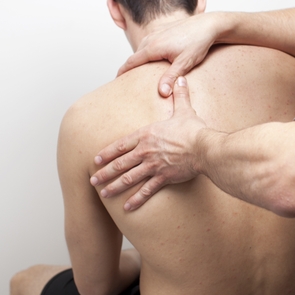Osteopathy is a way of detecting, treating and preventing health problems by moving, stretching and massaging a person's muscles and joints.

Osteopathy is based on the principle that the wellbeing of an individual depends on their bones, muscles, ligaments and connective tissue functioning smoothly together.
Osteopaths use physical manipulation, stretching and massage, with the aim of:
- increasing the mobility of joints
- relieving muscle tension
- enhancing the blood supply to tissues
- helping the body to heal
They use a range of techniques, but don't use drugs or surgery.
What is the difference between Osteopaths, Chiropractors and Physiotherapists?
Although Osteopaths, Chiropractors and Physiotherapists are very similar, they are each derived from independent schools of thought and their approach to patient treatment differs.
Each profession uses orthopaedic and neurological examination skills, similar to those used by traditional medical practitioners, to examine and diagnose their patients' presenting complaints. They will all teach patients a variety of exercises to be carried out at home to reinforce their care between treatment sessions.
Osteopathy
Osteopathy is a primary healthcare profession, focusing on the diagnosis, treatment, prevention and rehabilitation of musculoskeletal (MSK) disorders, and their effects on the patient's general health.
Osteopaths seek to restore the optimal functioning of the body, based on the principle that the body can heal itself, and focus their sessions on strengthening the MSK system to treat existing conditions and to prevent illness. By considering symptoms in the context of the patient's full medical history, as well as their lifestyle and personal circumstances, a holistic Osteopathic approach ensures that all treatment is tailored to the individual patient
Treatment increases the mobility of joints, relieves muscle tension, promotes the blood and nerve supply to tissues and helps the body's own healing mechanisms via a range of techniques, such as joint manipulation, articulation, soft/deep tissue massage, soft tissue stretch and often acupuncture. Advice on posture and exercise to address potential barriers to recovery is regularly provided too.
Chiropractic
Chiropractic is a primary healthcare profession, specialising in the diagnosis, treatment and prevention of neuromusculoskeletal disorders and their effects on the function of the nervous system and general health. It is especially related to the spine.
Some problems associated with the MSK system can be caused by accidents, stress, inactivity, poor posture, illness and everyday wear and tear. These problems may cause pressure on the nerves in the body.
Chiropractors use specific manipulations to free joints in the spine or other areas of the body that are not moving properly, and give patients advice on exercise, self-help, diet and lifestyle. Chiropractors regularly promote rehabilitation programmes and provide advice on posture.
Physiotherapy
Physiotherapy is a primary healthcare profession, aiming to restore movement and function to the fullest potential when someone is affected by injury, illness or disability.
Physiotherapists achieve this through movement and exercise, manual therapy, education and advice.
References
www.csp.org.uk
www.gcc-uk.org
www.osteopathy.org.uk
www.nhs.uk

